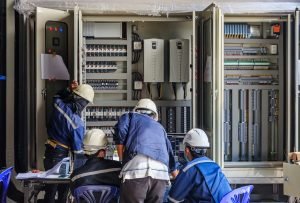Various concrete testing methods are carried out as part of the quality control of concrete structures for both fresh and hardened concrete.
These concrete testing methods are tremendously important as they provide information about the material’s qualities, such as strength, durability, air content, and permeability.
Without further ado, let’s get right into some of the popular concrete testing methods available!
Concrete Testing Methods for Fresh Concrete
For fresh concrete, the concrete testing methods performed are meant to measure workability, air content, and maturity.
Workability
- Workability means the ability and homogeneity with which freshly mixed concrete or mortar can be manipulated. Simply put, concrete workability refers to how quickly freshly mixed concrete may be mixed, placed, consolidated, and finished with minimum homogeneity loss.
- A workability test is essential to ensure smooth construction work. Some common ways to determine workability include slump test, flow table test, compacting factor, and vee bee consistometer test. In particular, the slump test is a crowd-favourite due to its hassle-free procedure and the simplicity of the apparatus used.
Air content
- The major goal of entraining air in concrete is to make it more durable when subjected to freeze or thaw cycles in the presence of water. Air-entraining admixtures for concrete produce small, consistent, and stable air bubbles. The bubbles then become air spaces, producing a relief system that enables water to expand as it freezes without destroying the concrete.
- Testing for air content can really help in avoiding future complexities. Also, it’s important to not only conduct the testing but also to consider the testing time. An air content test should be performed within 15 minutes after receiving the composite sample.
Maturity
- Maturity is the link between concrete temperature, time, and strength gain. Essentially, concrete maturity reveals how far the curing process has advanced. Since concrete strength is linked to maturity, the maturity method is a way to achieve this without relying entirely on standard test specimens and laboratory testing.
- Maturity determines the in-place strength of fresh concrete by linking time and temperature measurements to true strength value. Knowing concrete strength in real-time helps expedite projects, enhance safety, and improve construction procedures.
Concrete Testing Methods for Hardened Concrete
Below are some of the concrete testing methods to examine the strength, durability, and viability of concrete structures:
Rebound hammer
- This test determines the surface hardness of concrete using a Schmidt Hammer. The hammer has a spring-controlled head that slides on a plunger device. During testing, the spring mechanism forces the hammer head into the concrete, and the head then bounces back after it makes contact with the concrete surface.
- The rebound is measured to find out the hardness of the concrete surface. This process is repeated several times to get an average to represent the concrete area’s surface hardness.
Pullout
- For the pullout test, a steel ram is fired 3 inches into the concrete. When the rod gets trapped inside, a winch device is used to draw it out, and measurements are taken to estimate the relative compression strength of the concrete structure under test.
Ultrasonic pulse velocity
- An ultrasonic pulse velocity testing involves a pulse generator and a pulse receiver. The test is carried out by firing ultrasonic pulses through a concrete area and measuring the time it takes to receive the pulse.
- Such testing can indicate if there are imperfections in the concrete, such as sections that are still wet, fractured or crumbling. The testing serves as a quality check to see if the concrete is solid or if it needs to be repaired.
Get Reliable Concrete Testing Methods with XESSB
As Malaysia’s leading NDT company, we offer various NDT services, including trusted and proven concrete testing to cater to your specific needs.





